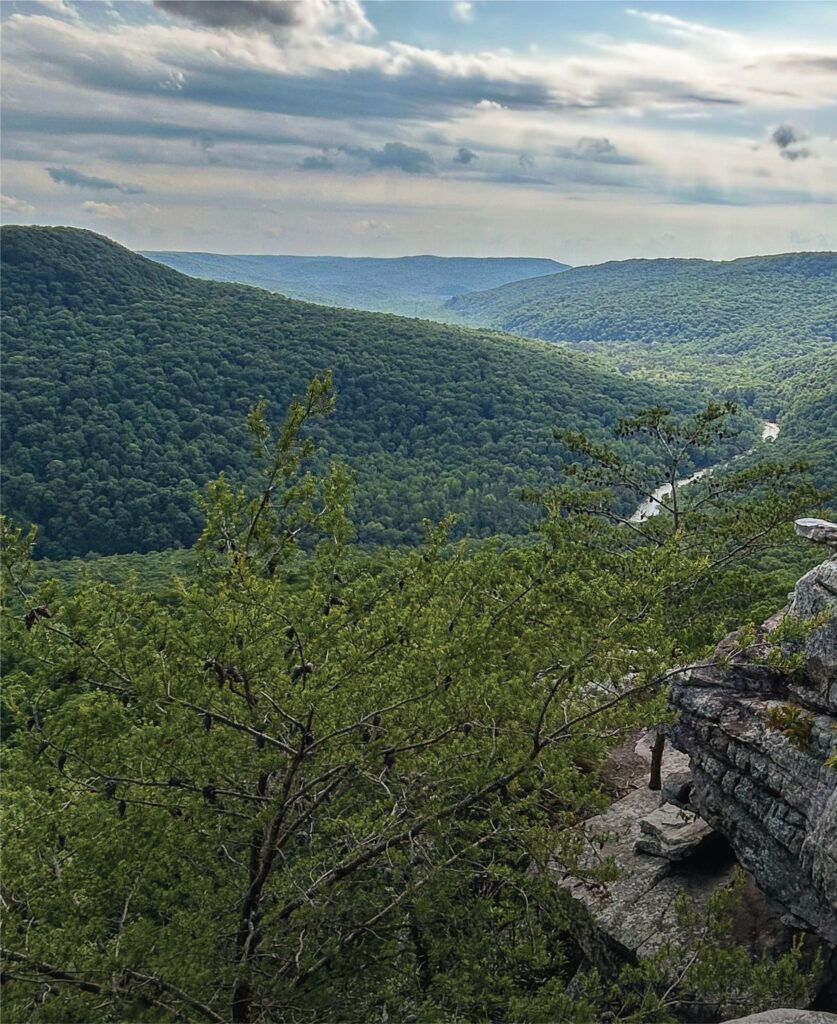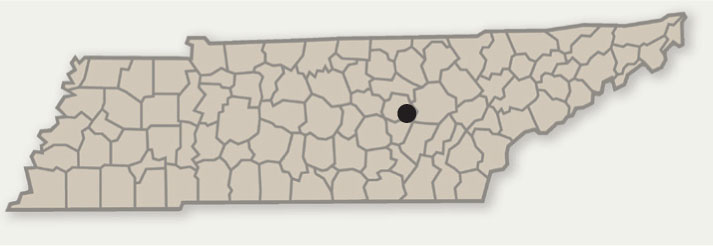Story by Trish Milburn | Photographs by Stuart Carroll
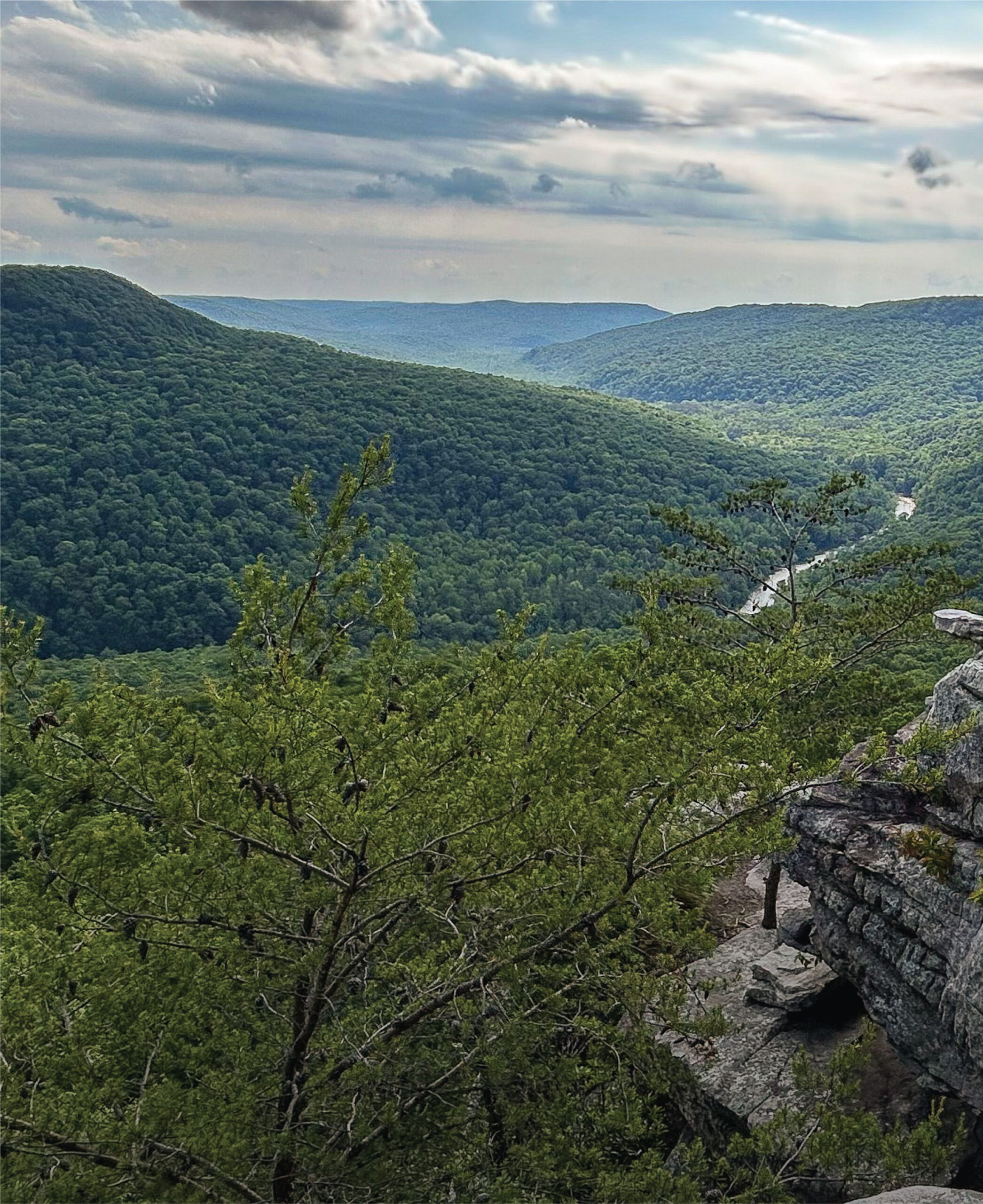
What’s the best way of describing Tennessee’s newest state park? Quite simply, awe-inspiring. Awe is definitely the feeling that overcomes many visitors to Scott’s Gulf Wilderness State Park, whether they’re standing atop Welch’s Point Overlook, witnessing the uniqueness of Virgin Falls or hiking through the park’s more than 9,500 lush acres.
Scott’s Gulf Wilderness became Tennessee’s 60th state park when it was dedicated on May 9 of this year. Even though the park is new, the sites within its boundaries are familiar to many outdoor enthusiasts. That’s because the park brought together already established public areas under one management umbrella. Those areas include the previous Virgin Falls and Lost Creek state natural areas, Dog Cove Historic Area and the Hardie Trailhead.
And the person who was named as the park’s first manager is also likely to be familiar to those who have visited those areas. Stuart Carroll has worked at helping preserve and highlight Tennessee’s public lands for decades. He started out as a seasonal naturalist at Old Stone Fort State Archaeological Park, spent about 30 years at Fall Creek Falls State Park as a ranger naturalist and later managed several areas — including Virgin Falls, Lost Creek and Dog Cove before they were brought together to form Scott’s Gulf Wilderness.

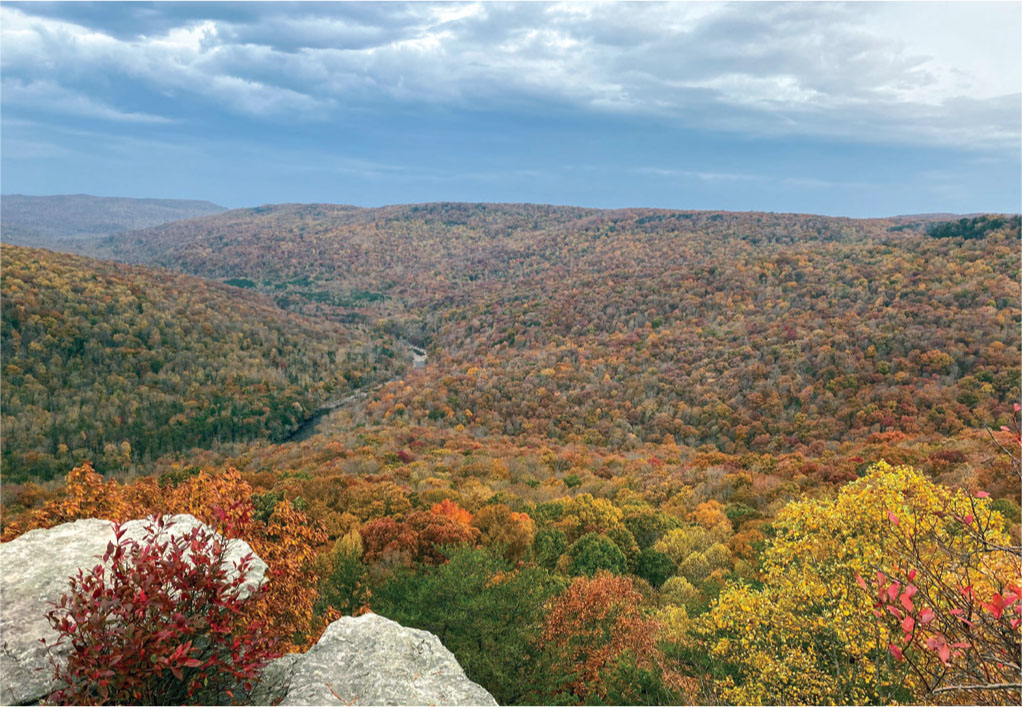
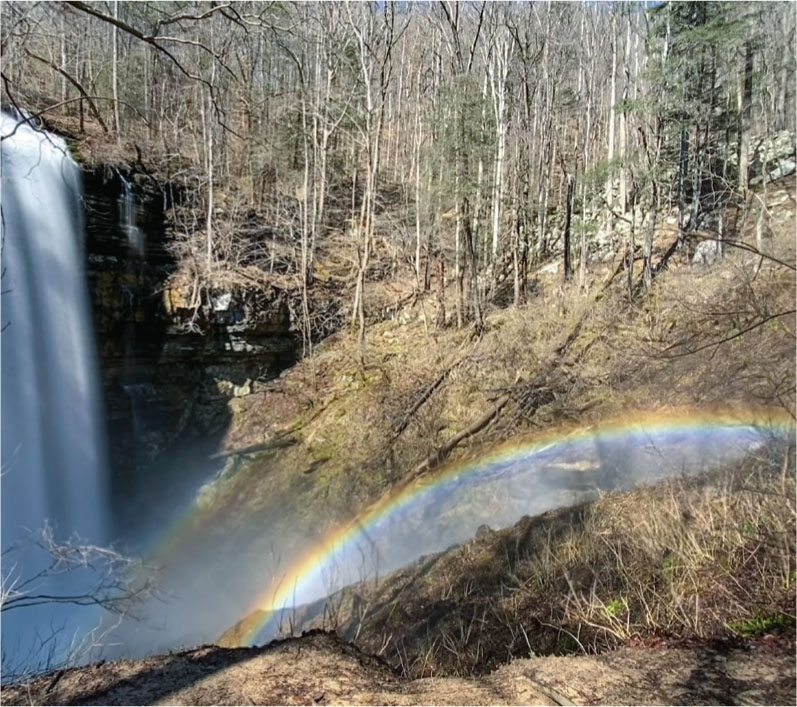
“It has been a great project,” Carroll says. “Working with local folks, the state and conservation groups, we have put together the acreage that we now know as Scott’s Gulf Wilderness State Park. It’s as if we were putting together the pieces of a puzzle.”
The Rylander family donated their property. Pam Hardie, Bob Ragland and the family of Beecher Wallace all held onto their property and/or sold it below market value in order to see it set aside as a state park. Groups such as TennGreen Land Conservancy, the Open Spaces Institute, the Nature Conservancy, the Conservation Fund and others helped put together those pieces. The Bridgestone Tire Corporation also donated land earlier that eventually became part of the park. Area residents such as Ross and Brenda Cardwell, Chuck Womack, Paul and Pam Miller and others helped galvanize local support for the project.
“Working with these different groups and people has been a rewarding endeavor,” Carroll says.
Within its expansive acreage, visitors to the park can indulge in a variety of popular outdoor activities.
Hiking
Don’t let the park’s size intimidate you. Yes, there are strenuous hikes to be had — such as the one that takes visitors to Virgin Falls, one of several waterfalls in the park — but there’s also plenty of easily accessible beauty to be enjoyed.
Sixteen different trails totaling nearly 40 miles of hiking opportunities range from the easy-to-moderate Lost Creek Falls Trail (0.2-mile loop) to the strenuous Caney Fork Trail (12 miles round-trip).
One of the more strenuous hikes also has one of the biggest payoffs. Virgin Falls is unique in that it comes out of a cave, drops 110 feet and then disappears into another cave. Reaching it, however, requires an 8.6-mile round-trip hike that loses 1,000 feet in elevation going in and, thus, gains that much coming back out.
“Virgin Falls is one of the most magical waterfalls in Tennessee,” Carroll says.
This particular area around Virgin Falls has been protected since 1970 when the Bowater Paper Company set it aside as a pocket wilderness.
If difficult hiking isn’t something you can manage or simply don’t have the time or inclination to undertake, there are still plenty of beautiful views to enjoy. The Welch’s Point Overlook lies only a few hundred yards from the nearby parking area and provides stunning views of Scott’s Gulf stretching out below.
Another easy hike is the 1-mile (2 miles round-trip) Yellow Bluff Trail, which takes visitors to another impressive overlook that gives views of Caney Fork Gorge and Gunstock Branch Falls.
The Homestead Trail (4.5-mile round-trip) is “an easy ramble out by some historic homesteads,” Carroll says.
The park’s website has detailed descriptions of each trail in the park, including length, difficulty level and what you can see from various points along the trails.
Dark sky viewing
In a world full of electric lights, it’s become something special to be able to see a truly dark sky filled with stars and the Milky Way galaxy. But if you’re part of a special Dark Sky viewing program at the park or staying in one of the primitive backcountry campsites, you’re in for a treat if the sky is clear. To get the most out of the experience, the park has provided useful tips for dark sky viewing on its website, including using a red low-light flashlight so that you can see things such as star charts without messing up your night vision as it adjusts to an environment with no artificial white lights.
Hunting and fishing
About 6,500 acres of the park are open to hunting. The park also shares boundaries with two units managed by the Tennessee Wildlife Resources Agency — Bridgestone Firestone Centennial Wilderness Wildlife Management Area, which includes the Big Bottom Unit of the WMA. The park and these TWRA units also share a couple of trails. It’s important to know that the park and the wildlife management areas have different rules and regulations regarding hunting, so be sure you are aware of these before heading out.
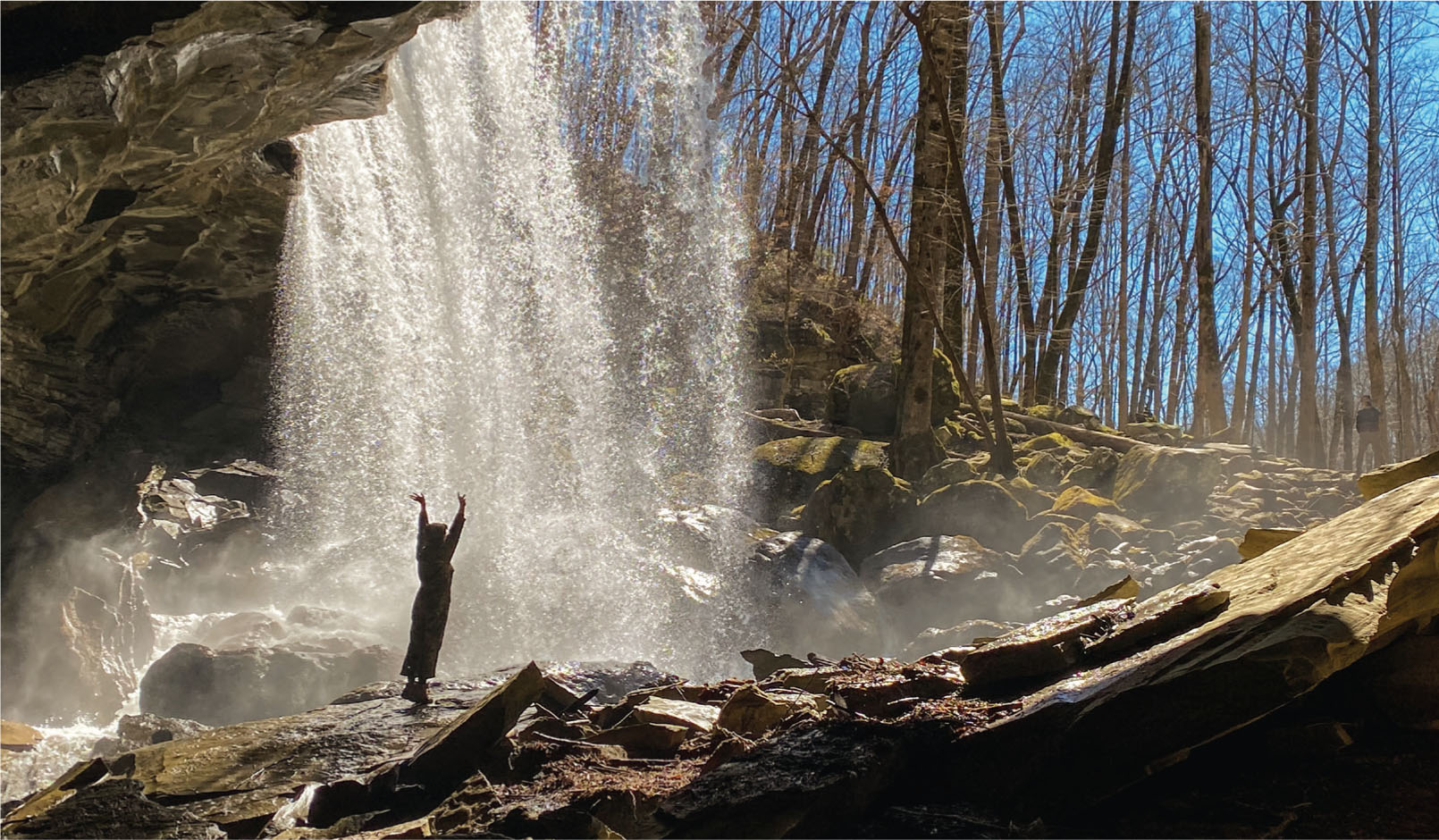
If your idea of an enjoyable time is finding a good fishing hole, then Scott’s Gulf Wilderness has you covered. Whether you choose a nice spot along the Caney Fork River or the park’s creeks, you’re likely to have a pleasant outing. Fish that you might hook at different points include bass, bream and muskellunge.
You can even combine hiking, camping and fishing during a trip to Amber’s Den Hole on the river. Access requires a 2-mile hike that loses 800 feet in elevation on your way to the fishing hole.
Paddling
Though there are a few different options for paddling in the park, the main access point is at Mitchell Ford on the Caney Fork. It’s important if you’re going to go beyond this point to know the conditions of the river and to arrange for a shuttle to pick you up on the other end. While some sections of water in the park are flat and calm, others can be rougher and thus more dangerous, especially if you’re not experienced with whitewater.
Camping
Throughout the park are 14 primitive campsites divided among four different areas. All of these campsites require a hike in. There is no water or electricity at these sites. You have to pack in everything you need (and pack it back out), though water can be collected from the Caney Fork River or Big Laurel Creek but must be treated before consuming it. Reservations for a campsite can be made on the park’s website.
Plans for the future
Carroll says that improvements to the new park are in the planning stages. The park’s current visitor center is in downtown Sparta. An on-site visitor center will come in the future, but there is not a timeline on building it yet because the location has not been decided.
“We do hope to open some more trails and overlooks,” Carroll says. “Since the park will be emphasizing its wilderness aspects, buildings will be kept to a minimum. However, park staff will be looking for increasing opportunities for folks to interact with these beautiful areas, so hopefully access to the park will improve, especially from areas on the south side of Scott’s Gulf. Also, expect more nature and history programs as park staff shares the area’s diversity with visitors.”




